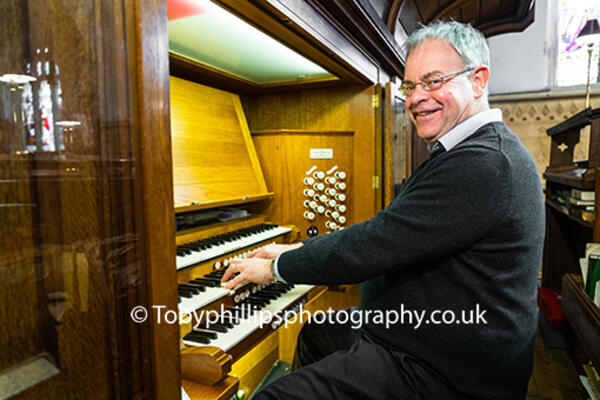St Mary’s Church Organ

Published on 1st July 2021
1865 was an important year at St Mary’s Parish Church. It is not only when the beautiful east window was installed, paid for by ladies of the parish, but also the year that the Henry Willis & Sons organ arrived.
‘Father’ Willis was the most famous organ builder in London. As well as winning a gold medal at the Great Exhibition of 1851, he made organs for some of the country’s most famous cathedrals, including St Paul’s and Salisbury. Each one had a distinctive sound that defined his work.
Mike Overend, Assistant Organist at St Mary’s, said: “Father Willis was well-known for making ‘swell’ organs with fiery trumpet stop-knobs. The pistons between the manuals (or keyboards) and the pedals allowed the organist to easily alter between soft and loud sounds, which was cutting-edge at the time. It’s his signature sound, and if people from 1865 could visit St Mary’s today, they would immediately recognise it.”
SWIRL EFFECT
While the sound of a Father Harris organ may be distinctive, it is versatile too. As it’s effectively three organs in one, an organist can create endless combinations of sounds and effects. It has three manuals, with each of them linked to pipes. The top section of the menu is called the “swell”. There’s a swell pedal too, played with feet, which works like a Venetian blind, creating a swirl effect and allowing organists to hold notes for longer.
The middle manual is called the “great” manual and that feeds the large outer pipes. This provides the ‘body’ of the organ’s sound. The third and lower manual is the “choir” which provides the gentler tones. The smaller pieces in the intricate city of about 2,600 pipes (above) which are hidden mostly out of sight are for these choir notes.
Director of Music Jeremy Weaver, who shares organ duties at St Mary’s with Mike, said: “All the manuals are interchangeable and you also have pedal divisions and stop-knobs to add a huge array of orchestral sounds. You can introduce trombones, violins or trumpets to create an even bigger sound!”
PNEUMATIC ACTION
The organ has been subject to significant maintenance at various times in its 155-year history. The first restoration was carried out by Norman & Beard in 1909, with further work done in 1955 and 1992, when the rebuilding was carried out by J.W. Walker & Sons. The last major restoration was carried out in 2015, by Brighton-based Patrick Christian.
Mike said: “The organ now has an electric pneumatic action, which has improved the sound, as there used to be a delay when you played it. Several great organ makers have added touches to the original over the years, so today it has a mixture of parts. But the original sound is still evident.”
“It’s a lovely organ to play, as it gives you the power to really colour a piece of music. Playing it is akin to sitting in an aircraft cockpit, as you’re there with hundreds of different controls in front of you and it’s a matter of pressing the right ones!”
INCREDIBLE SOUND
Being the church organist is a big commitment for just one person. So, Mike and Jeremy share the honour. As well as supplying the soundtrack to countless weddings and religious services over the years, schools and music groups also utilise the organ for concert performances, making it a valuable community asset.
“The acoustics at St Mary’s are wonderful, so we can create a big sound,” says Jeremy. “We have a very good choir here too, and you have to be able to manage the organ so that it complements the choir, rather than overwhelms it. But we can still build towards a powerful crescendo and lift the entire congregation. When the choir is in full flow, such as during the ‘Hallelujah’ chorus on a traditional Easter Sunday service, the combined sound can be incredible!”
WORTH THE MONEY
Many historic church organs have been lost over the years. They are expensive to repair if not properly maintained. Worn leather in the bellows of the pipes can lead to leaks, or the wooden structures can expand because of the temperatures inside historic buildings. Consequently, some churches have replaced pipe organs with electronic versions, which are cheaper to maintain and require less space. But that won’t be happening soon at St Mary’s.
Mike said: “We are lucky that the church is committed to regular maintenance of the organ, even though it comes at a cost. We hope that will continue long into the future, as we’re lucky to have such a fascinating and historic instrument in Horsham.”
Further information: St Mary’s hosts lunchtime music recitals on Wednesdays, which present an opportunity to hear the organ. For details, visit www.stmaryshorsham.org.uk
WORDS: BEN MORRIS
PHOTOS: TOBY PHILLIPS






